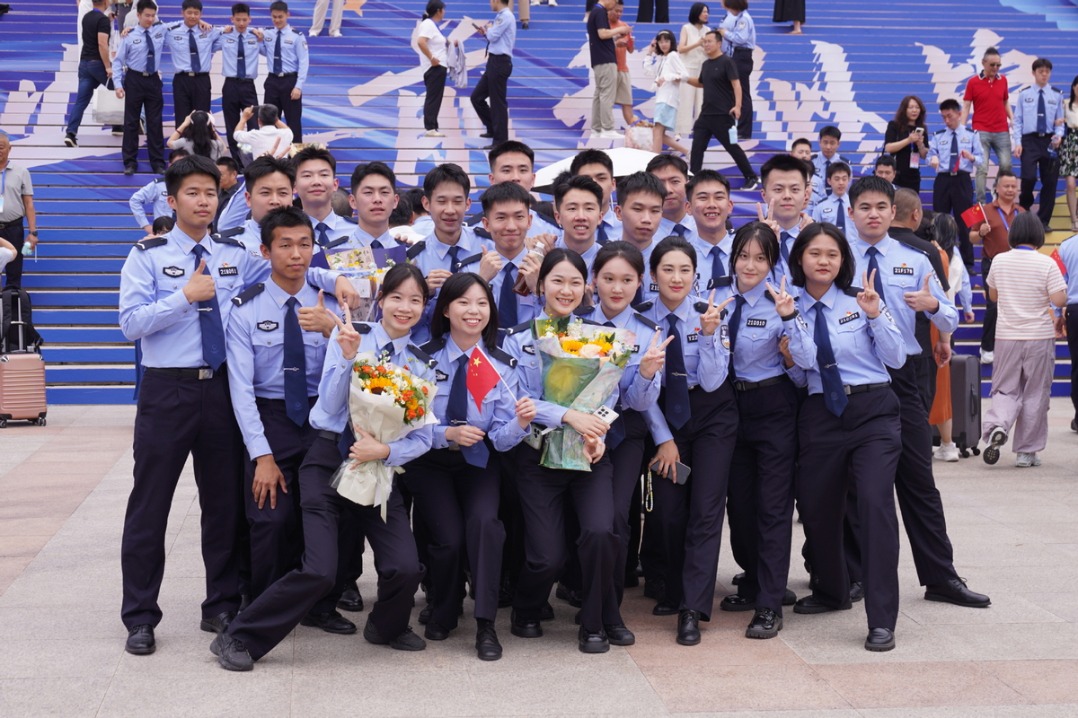Nation to improve population policy as blueprint unfolds in new era, experts say


China's family planning policy is expected to be further relaxed over the next five years and beyond, with extensive social and economic support provided to counter increasingly prominent problems such as a shrinking workforce and an aging population, experts said.
"The universal second-child policy will by no means be the end of optimization of the family planning policy," said Yuan Xin, vice-president of the China Population Association. "More inclusive population policies will be introduced to improve fertility, the quality of the workforce and the structure of the population."
A blueprint mapping out China's development over the next five years and in the longer term listed improving the family planning policy to promote balanced population development as a major task in the national strategy to tackle the graying of society. The blueprint for China's 14th Five-Year Plan (2021-25), along with development goals for the next 15 years, was released early this month after the Fifth Plenary Session of the 19th Central Committee of the Communist Party of China in October.
It also called for forming a long-term population development strategy, with a more inclusive family planning policy and the development of affordable nursery services to reduce the cost of raising children.
There could be many aspects to an inclusive family planning policy, such as adjustments to existing policy so it links with related health, education and employment policies, said Yuan, who is also a population studies professor at Nankai University in Tianjin.
"For most of the past decades, the family planning policy was more restrictive and the related social and economic policies were designed to encourage fewer births," he said. "With the relaxation of the family planning policy in recent years, these policies need adjustment."
Lu Jiehua, a population studies professor at Peking University, said that in addition to improvements to supporting policies to encourage couples to have a second child, such as building more affordable nursery facilities, the existing family planning policy will be further relaxed because of falling births in recent years and a projected fall in the total population over the next few years.
"More research and discussion is needed as to when the policy can be further relaxed, and to what extent it will be relaxed-whether all couples will be allowed to have three children, or whether the family planning policy will be entirely abolished," he said.
Yuan said disparities between different regions should be taken into account when relaxing China's existing family planning policy, and policies suitable for different areas or different groups of people should be adopted rather than a unified national policy for all places.
"We still lack precise data on which groups of people tend to give birth to more children," he said. "But we found in some impoverished areas in the west that people are still obsessed with having more children, so a more relaxed family planning policy may mean more children for them and make it more difficult for them to escape poverty."
Significant impact
The predicted decline in China's population has become a major concern among experts in the country, who expect demographic changes to have a significant socioeconomic impact.
The birthrate on the Chinese mainland dropped to 10.48 per 1,000 people last year, the lowest level in seven decades, and the number of births was down 580,000 compared with the previous year, according to the National Bureau of Statistics. It was the third consecutive year of falling births despite the implementation in 2016 of a universal second-child policy that allows all couples to have two children.
Although birth figures for this year have yet to be released, population experts generally expect the decline to continue.
Lu, from Peking University, said the total fertility rate-the average number of children a woman gives birth to-should remain at about 2.1 for China's population to remain stable, but it has fallen below 1.7, signaling an inevitable decline in population. The National Development and Reform Commission said in 2017 that China's population would peak around 2030, but in recent years researchers from home and abroad have predicted an earlier peak.
Li Yue, a researcher at the China Population and Development Research Center, predicted China's population will peak at about 1.42 billion in 2027, up from 1.4 billion last year, and then start to fall to 1.32 billion by 2050.
A study published in the medical journal The Lancet in July predicted the peak will occur in 2024, with the population then halving by the end of the century. It said China will no longer be the world's most populous country by 2100-for the first time for many centuries-and will fall to third place behind India and Nigeria.
The number of women in China aged between 20 and 34, those most likely to give birth, has been falling for the past five years and the decline is set to accelerate, Li said, with the number set to tumble by an average of 6.2 million annually over the next five years.
Yuan, from Nankai University, said many young couples in China are reluctant to have more children due to factors such as the high cost of raising children. The trend of population decline will not reverse even if the family planning policy is relaxed further, he said, with the workforce continuing to shrink and the average age of the population increasing.
The number of people aged 60 or above in China last year was 254 million, 18.1 percent of the population, but that number is expected to soar to 500 million, accounting for more than a third of the population, by the middle of the century, Yuan said, making China one of the world's most aged societies.
Facing an inevitable decrease in the number of people of working age and a rapid increase in the number of elderly people, China must make more efforts to improve the quality of its workforce to ensure sustainable socioeconomic development, he said.
- China confronts senior cancer surge with early detection, TCM
- Expert debunks Lai's 'four elements' argument for Taiwan's so-called statehood
- Tech innovations fuel China's desertification fight
- 4 giant pandas return to China from Japan
- China allocates another 100m yuan to aid flood-hit Guizhou
- HK entrepreneur Ho Tsu-kwok dies at 77





































